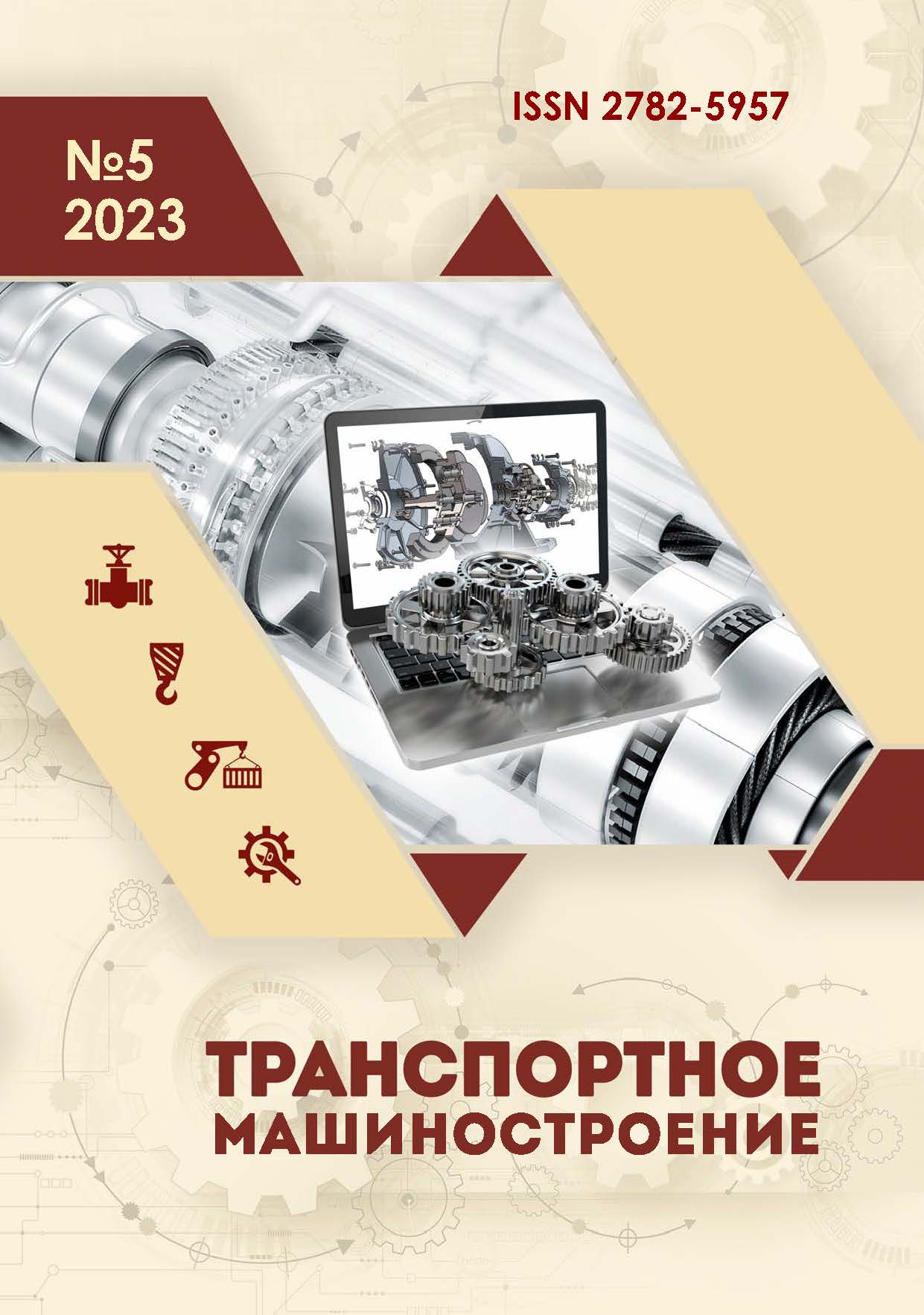Rostov-on-Don, Rostov-on-Don, Russian Federation
Rostov-on-Don, Rostov-on-Don, Russian Federation
Rostov-on-Don, Rostov-on-Don, Russian Federation
Rostov-on-Don, Rostov-on-Don, Russian Federation
62-52
345
The research objective is to study the technological capabilities and develop methods for designing highly efficient technological processes of strengthening treatment of parts with an oscillating tool - an eccentric strengthener. The tasks are theoretical modeling of the the oscillating tool processing dynamics, theoretical modeling and experimental studies of forming surface roughness, the depth of the strengthened layer and the degree of parts deformation during treatment with an oscillating tool, as well as the development of a technique for designing high-efficiency technological processes. A new method of machining parts by surface plastic deformation is proposed. The dependences of the influence of treatment modes, design characteristics of the equipment and physical and mechanical properties of treated part materials on the quality parameters of the surface layer (surface roughness, depth of the strengthened layer and the degree of deformation) are obtained. The dependence for determining the treatment time is presented. The theoretical dependences obtained are experimentally verified and found to be adequate according to the results of experimental studies. The regularities of designing technological processes ensuring an increase in the operational properties of the machined parts are developed. An engineering calculation technique of optimal parameters of technological processes for machining parts with an oscillating tool is developed in order to increase their operational properties. A method for optimizing the technological processes of machining parts with an oscillating tool is proposed. A software product is developed that allows performing technological design using microprocessor technology.
oscillating tool, strengthener, roughness, surface, depth, layer, deformation
1. Babichev AP, Motrenko PD. Finishing and strengthening treatment of parts with a multi-contact vibro-impact tool. Rostov n/A: Publishing Center of DSTU; 2003.
2. Motrenko PD. Technological quality assurance of large-sized and long-length parts of complex shapes during vibration shock treatment [dissertation]. [Orel (RF)]; 2008.
3. Aslanyan IR, Blumenstein VYu. Technological processes of surface plastic deformation: monograph. Irkutsk; 2007.
4. Tamarkin MA, Tishchenko EE, Shvedova AS, Isaev AG. Technological bases of optimizing finishing and strengthening treatment of parts in granular media. Strengthening Technologies and Coatings. 2015;11(131):12-16.
5. Kopylov YuR. Dynamics of vibration shock strengthening processes: monograph. Voronezh: Nauchnaya Kniga; 2011.
6. Popov ME, Khashash O, Morgunov DYu. Vibro-percussion and vibro-wave methods for reiinforcement and stabilizing treatment of mining machine parts. Mining Information and Analytical Bulletin (scientific and technical journal). 2017;6:107-112.
7. Kudryavtsev IV. Fundamentals of choosing the mode of strengthening surface cold working by impact method. In: Increasing the durability of machine parts by methods of surface cold working. Tr. TSNIITMASH; 1965. p. 6-34.
8. Drozd MS, Matlin MM, Sidyakin YuI. Engineering calculations of elastic-plastic contact deformation. Moscow: Mashinostroenie; 1996.
9. Tamarkin M, Tishchenko E, Murugova E, Melnikov A. Surface quality assurance and process reliability in the processing with a ball-rod hardener/ E3S Web of Conferences. Proceedings of XIII International Scientific and Practical Conference, February 26-28, 2020: State and Prospects for the Development of Agribusiness - INTERAGROMASH 2020. Rostov-on-Don; 2020.
10. Tamarkin M, Tishchenko E, Fedorov V. Theoretical bases of the surface layer formation in the finishing and hardening treatment of details by SPD in flexible granular environment/ IOP Conference Series: Materials Science and Engineering. 2016.
11. Tamarkin M, Tishchenko E, Astashkin A. Module system developing of computer-aided engineering for process technologies with ball-shaft hardener. Lecture Notes in Networks and Systemsthis link is disabled. 2023;509:1605-1613.
12. Korolev AV, NovoselovYuK. Theoretical and probabilistic foundations of abrasive treatment. Saratov: Saratov University Publishing House; 1989.
13. Beskopylnyi A, Meskhi B, Beskopylny N, Chukarina I, Isaev A, Veremeenko A. Strengthening of welded joints of load-bearing structures of robotic systems with ball-rod hardening. Proceedings of XIV International Scientific Conference, 2022: INTERAGROMASH 2021. Smart Innovation, Systems and Technologies. Singapore; 2022.
14. Beskopylny A, Meskhi B, Veremeenko A, Isaev A. Influence of boundary conditions on the strengthening technology of a welded joint with a ball-rod hardener. IOP Conference Series: Materials Science and Engineering. International Scientific and Practical Conference Environmental Risks and Safety in Mechanical Engineering, ERSME 2020; 2020. p. 012047.
15. Tamarkin MA, Tishchenko EE, Tishchenko RG. Technological support of digital production when machining parts with a ball and bar reinforce. iPolytech Journal. 2022;26(2):184-196.
16. Blumenstein V, Makhalov M. The metal surface layer mechanical condition transformation in machining processes. The conference proceedings, 2019: ISPCIME-2019.
17. Smolentsev V, Kuzovkin A, Safonov S. Nano-transformations in the surface layer of materials under combined processing by unbound granules. Proceedings of the conference, 2019: Materials Today. 2019.
18. Smolentsev V, Safonov S. The technological methods of surface layer modification in construction materials. MATEC Web of Conferences; 2017.
19. Makhalov MS, Blumenstein VYu. The residual stress modeling in surface plastic deformation machining processes with the metal hardening effect consideration. Solid State Phenomena. 2022;328:27-37.
20. Blumenstein V, Makhalov M. The metal surface layer mechanical condition transformation in machining processes. Proceedings of the conference, 2019: MATEC Web of Conferences, ISPCIME-2019; 2019.
21. Chigirinskii YL. Surface quality after different treatments/Russian Engineering Research. 2011;31(8):816-819.
22. Plotnikov AL, Chigirinskii YuL, Frolov EM, Krylov EG. Formulating CAD/CAM modules for calculating the cutting conditions in machining. Russian Engineering Research. 2009;29(5):512-517.






